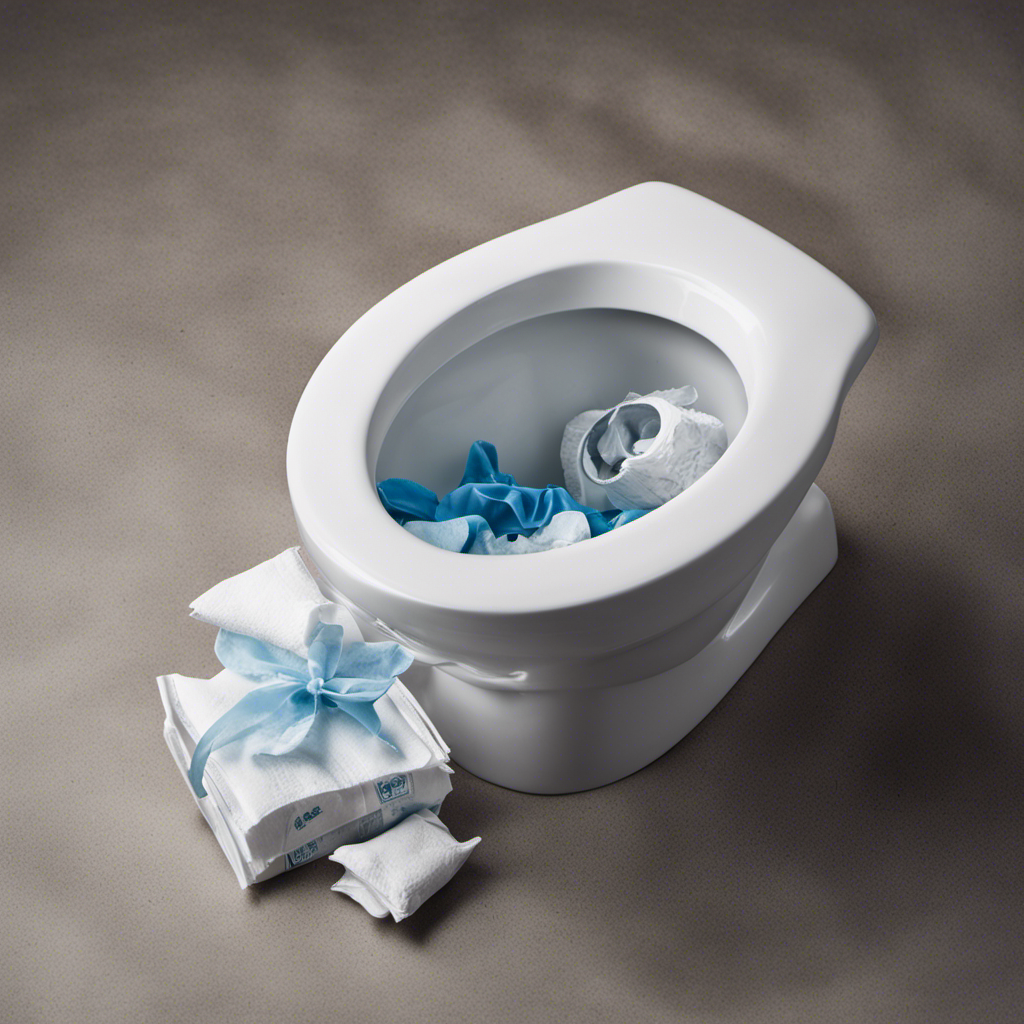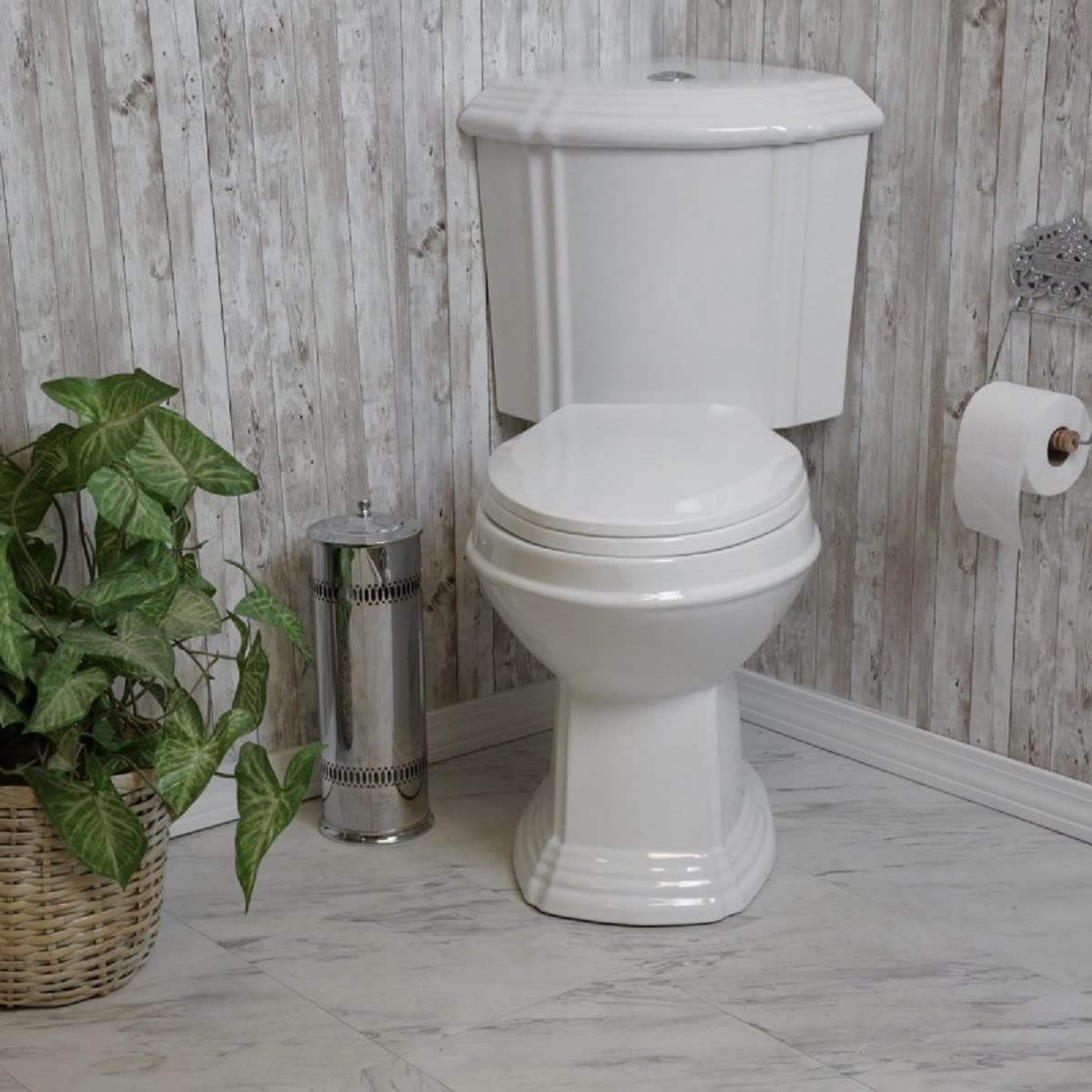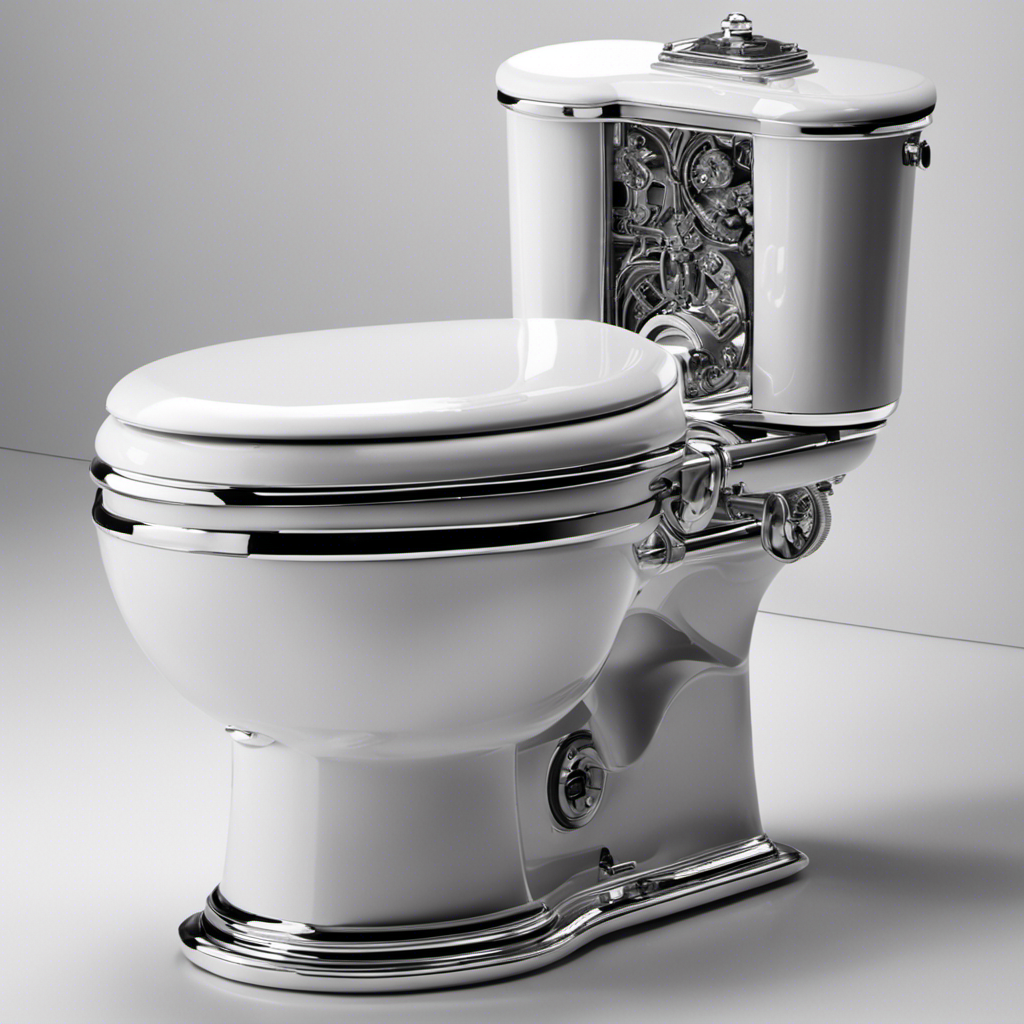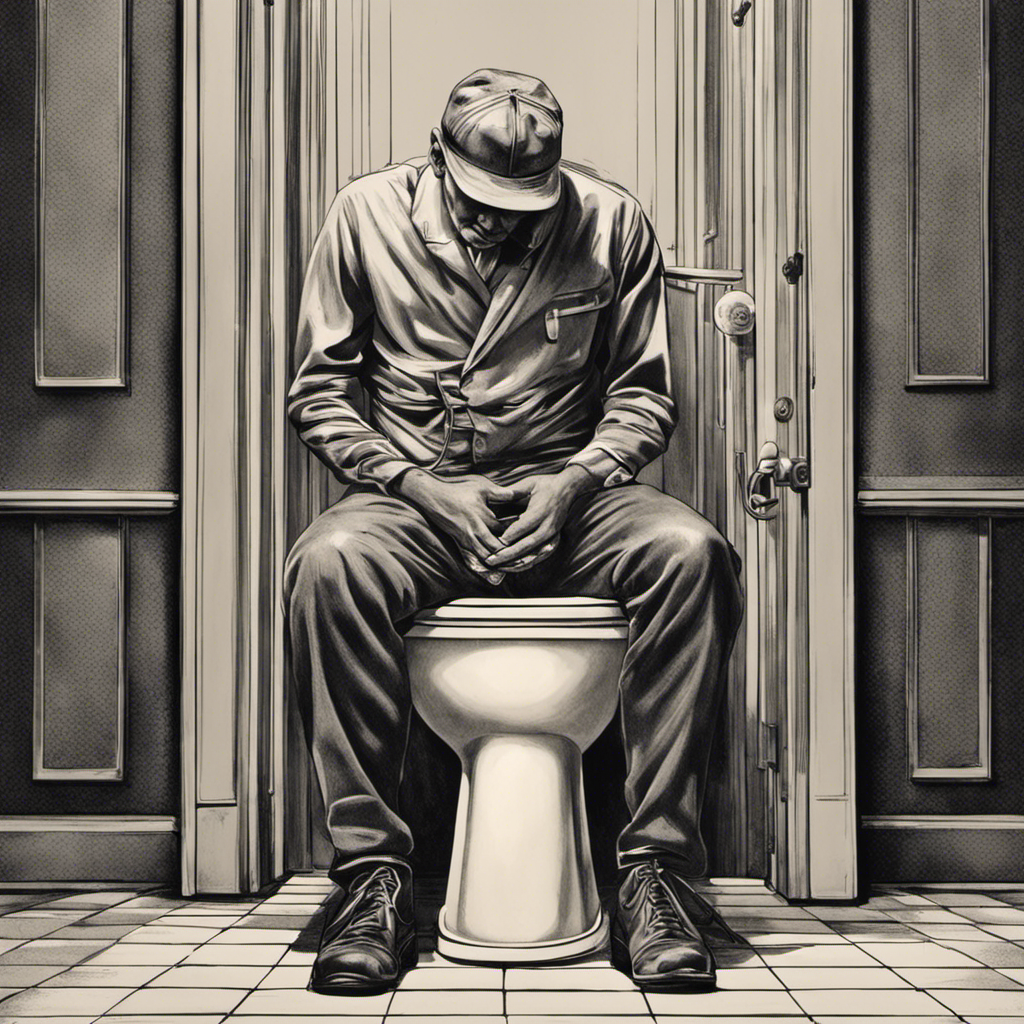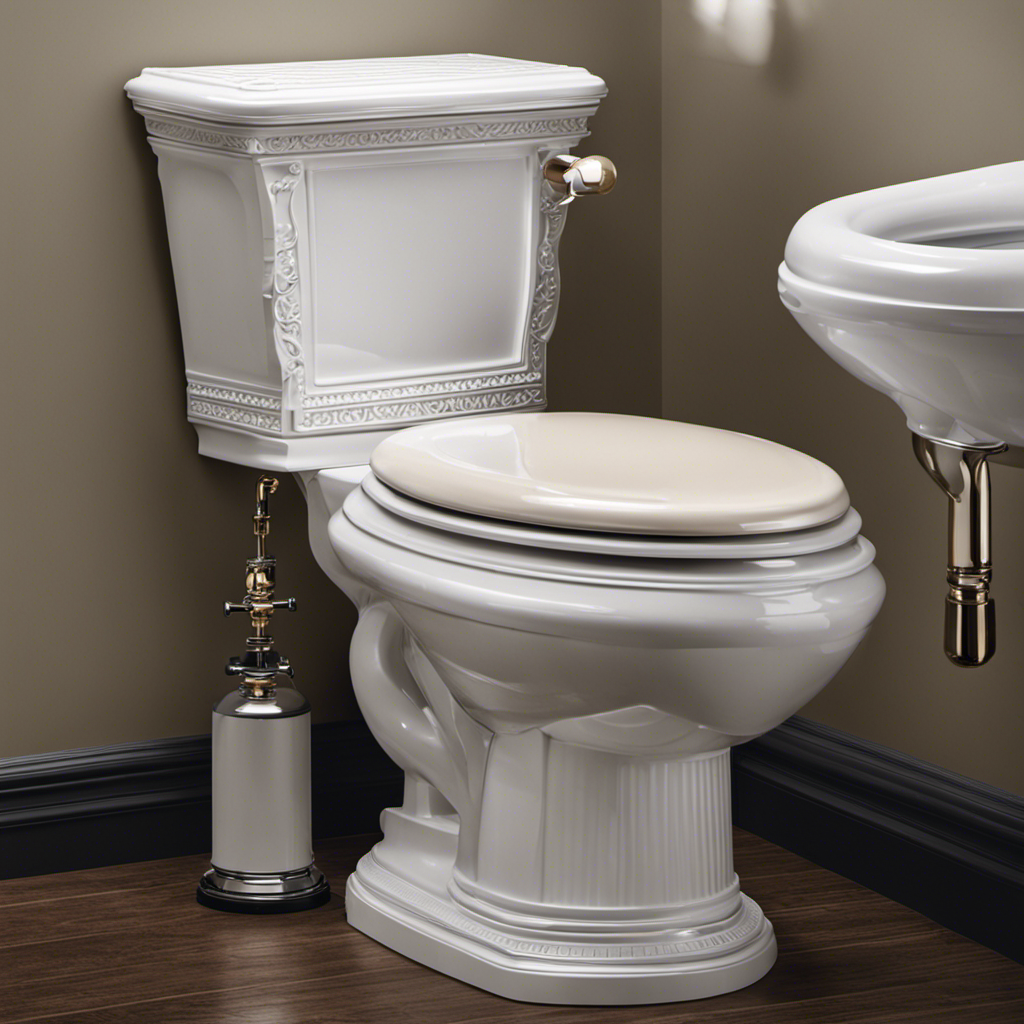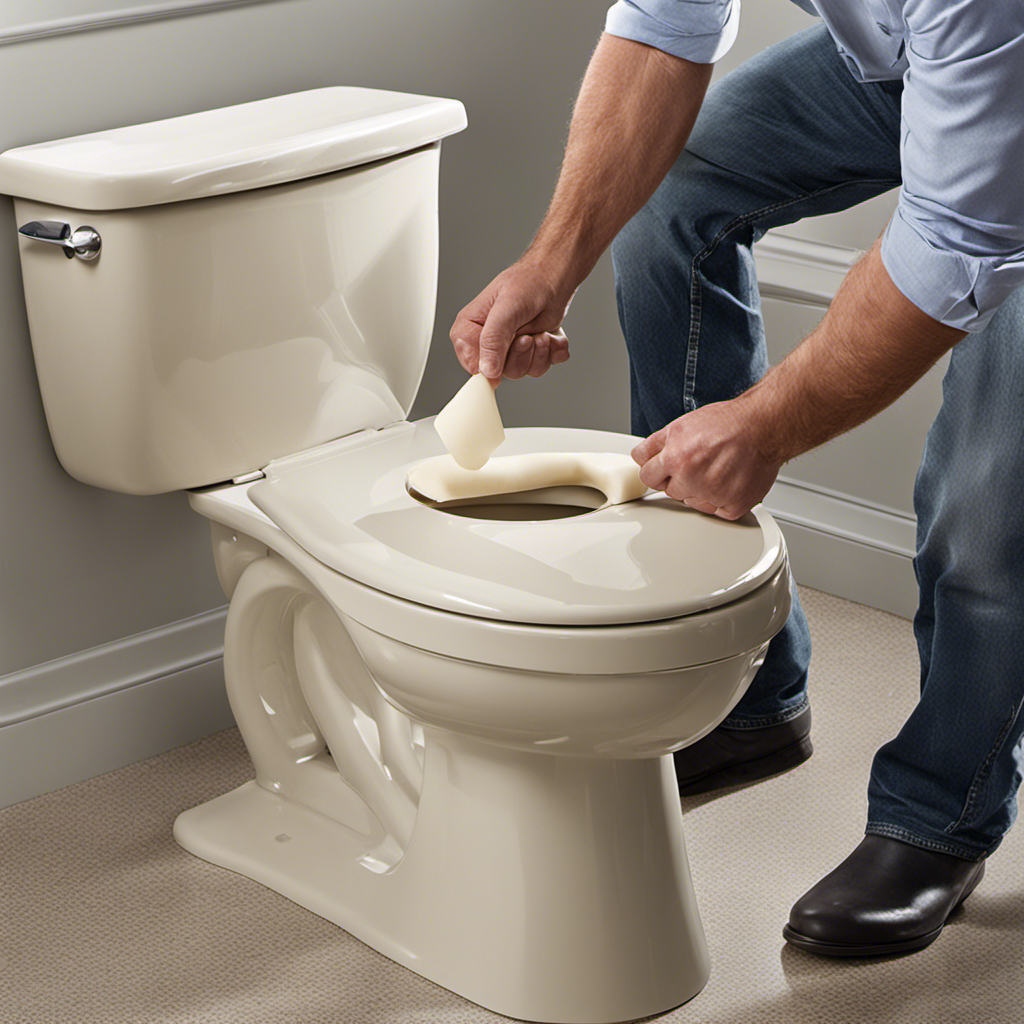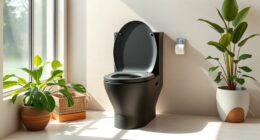Do you find yourself constantly dealing with clogged toilets? Well, you’re not alone. It’s a frustrating and inconvenient problem that many people face.
But have you ever wondered why your toilet clogs so easily? In this article, we will explore the common causes of toilet clogs and provide you with the knowledge and techniques you need to avoid this pesky issue.
So, get ready to say goodbye to those plungers and hello to hassle-free flushing!
Key Takeaways
- Flushing inappropriate items and lack of awareness about what can and cannot be flushed are common causes of toilet clogs.
- Factors such as toilet bowl design, drain size, water pressure, and faulty flapper valve can affect flush power and efficiency.
- Proper prevention and maintenance techniques include only flushing toilet paper and human waste, regular cleaning, adjusting water flow, and using thinner toilet paper.
- Flushing habits, such as educating household members, encouraging multiple flushes, and implementing a ‘flushable only’ policy, can have a significant impact on preventing toilet clogs.
Common Causes of Toilet Clogs
One of the most common causes of toilet clogs is flushing items that should not be flushed, such as sanitary products or paper towels. Flushing these items can lead to blockages in the pipes, causing the toilet to clog easily.
To prevent this, it is important to educate yourself and others in your household about what can and cannot be flushed down the toilet.
Additionally, there are some toilet clog remedies that you can try before seeking professional plumbing assistance. For minor clogs, using a plunger can often dislodge the blockage and restore normal flow. Another option is using a drain snake to remove any obstructions.
However, if these remedies do not work or if the clog persists, it is advisable to contact a professional plumber for assistance.
Understanding the Flush Power of Your Toilet
When it comes to toilets, understanding the flush power is crucial in preventing clogs. The strength of the flush determines how effectively waste is removed from the bowl and transported through the plumbing system.
Toilet Flush Strength
Have you considered whether the strength of your toilet flush could be causing it to clog so easily? The design of your toilet bowl and the size of the toilet drain play a crucial role in determining the flush strength. Let’s take a closer look at these factors:
-
Toilet Bowl Design: The shape and size of the toilet bowl can affect the force of the flush. A well-designed toilet bowl with smooth contours and a wider rim can create a more powerful flush.
-
Toilet Drain Size: The diameter of the toilet drain determines how efficiently waste is removed from the bowl. A larger drain allows for a stronger flush, preventing clogs.
-
Water Pressure: Adequate water pressure is essential for a strong flush. Low water pressure can result in incomplete waste removal and frequent clogs.
-
Flapper Valve: A faulty or worn-out flapper valve can reduce the force of the flush, leading to clogs.
-
Sediment Buildup: Over time, sediment can accumulate in the toilet bowl and drain, inhibiting the flow of water and causing clogs.
Understanding the impact of toilet bowl design and drain size on flush strength is essential in preventing frequent clogs.
Clog Prevention Techniques
To prevent clogs, you can try using a plunger to unclog the toilet or using a drain snake to remove any blockages. However, the best way to prevent blockages is through regular toilet maintenance. By taking proactive steps, you can minimize the chances of your toilet clogging easily. Here are some effective techniques to prevent blockages:
| Technique | Description | Frequency |
|---|---|---|
| Flushing properly | Ensure you only flush toilet paper and human waste. Avoid flushing items such as paper towels, sanitary products, or excessive amounts of toilet paper. | Every time you use the toilet |
| Regular cleaning | Clean your toilet regularly to remove any buildup, which can contribute to blockages. Use a toilet brush and a mild cleaner to scrub the bowl and remove any residue. | Weekly |
| Water flow adjustments | Adjust the water flow in your toilet to improve flushing power. Most modern toilets have an adjustable water level or flush strength settings. Experiment with different settings to find the one that works best for your toilet. | As needed |
The Role of Toilet Paper in Clogging
The excessive use of toilet paper can contribute to clogging issues. When toilet paper is used in excess, it can build up in the pipes and cause blockages.
To prevent this from happening, consider using toilet paper alternatives such as bidets, wet wipes, or even reusable cloth wipes. These alternatives reduce the amount of toilet paper being flushed down the toilet, decreasing the risk of clogs.
Additionally, using thinner, single-ply toilet paper can also help prevent clogs as it breaks down more easily.
It’s important to be mindful of the impact of excessive toilet paper usage on your plumbing system and to adopt practices that minimize the risk of clogging.
Avoiding Clogs: Proper Flushing Techniques
Using proper flushing techniques can prevent your toilet from easily clogging. Efficient flushing methods and water-saving flush techniques are key to maintaining a smoothly functioning toilet.
To ensure efficient flushing, start by pressing the handle down completely and holding it for a few seconds. This allows a sufficient amount of water to flow through the bowl, helping to clear any potential clogs.
Consider using a dual-flush toilet with separate buttons for liquid and solid waste. This allows you to control the amount of water used and can further prevent clogs.
Using water-saving flush techniques not only reduces the risk of clogs but also conserves water. By being mindful of how much water you use, you can contribute to environmental sustainability.
Now that you know how to prevent clogs, let’s explore the signs of a partially clogged toilet.
Signs of a Partially Clogged Toilet
One way to identify a partially clogged toilet is by observing water levels that rise higher than usual after flushing. This can be a sign that there is a blockage in the pipes, causing water to accumulate in the bowl.
Here are some other signs to look out for:
- Slow drainage: If the water takes longer than usual to drain after flushing, it could indicate a partial clog.
- Gurgling sounds: Unusual gurgling noises coming from the toilet after flushing can suggest that there is a blockage in the pipes.
- Water backup in other fixtures: If water backs up into sinks or showers when you flush the toilet, it could indicate a partially clogged toilet.
- Foul odors: A persistent unpleasant smell coming from the toilet could be a sign of a partial clog.
- Flushing difficulty: If you notice that the toilet requires multiple flushes to clear the bowl, it may be due to a partial clog.
Understanding these signs can help you take proactive measures for toilet clog prevention. However, if you find yourself dealing with a fully clogged toilet, there are DIY solutions for stubborn toilet clogs that you can try.
DIY Solutions for Stubborn Toilet Clogs
You’ve identified the signs of a partially clogged toilet, and now it’s time to tackle the issue head-on with some DIY solutions for those stubborn clogs.
There are several effective toilet unclogging methods that you can try, and best of all, many of them involve natural remedies.
One popular technique is using a mixture of baking soda and vinegar. Start by pouring half a cup of baking soda into the toilet bowl, followed by one cup of vinegar. Let the mixture sit for about 30 minutes, and then flush the toilet. The chemical reaction between the baking soda and vinegar helps break down the clog.
Another natural remedy is using hot water. Simply heat a pot of water until it’s hot but not boiling, and carefully pour it into the toilet bowl. The hot water can help dissolve the clog and push it through the pipes.
Remember to always use a plunger or a toilet auger if the clog persists.
Conclusion
In conclusion, understanding the common causes of toilet clogs and implementing proper flushing techniques can greatly help in preventing frequent clogging issues.
By being aware of the flush power of your toilet and using the right amount of toilet paper, you can avoid unnecessary clogs.
Additionally, recognizing the signs of a partially clogged toilet and utilizing DIY solutions can save you from the hassle of calling a plumber.
Remember, by following these tips and tricks, you can enjoy a clog-free toilet experience.
